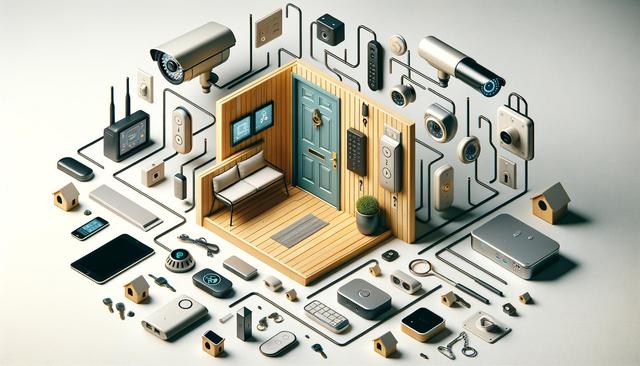
Smart Choices for Safer Living: Exploring Home Security Systems
Understanding the Importance of Home Security
Home security systems are more than just tools to deter theft—they are comprehensive solutions that help families feel safe and secure in their own homes. With technological advancements, these systems have become more accessible and customizable, offering protection not only from intrusions but also from fires, carbon monoxide leaks, and more. As urban and suburban areas continue to grow, so do concerns about residential safety, making it increasingly important for homeowners to consider implementing reliable security measures.
Beyond deterring crime, home security systems can serve as preventive tools. Visible signs of a security system—such as cameras or yard signs—can significantly reduce the likelihood of a break-in. Many systems also include features that allow for rapid response in emergencies, such as automatic alerts to local authorities or direct communication with monitoring centers. These capabilities offer peace of mind, especially for families with children, seniors, or those who travel frequently.
Key Components of a Home Security System
Modern home security systems typically come with a range of components, each designed to serve a specific purpose in maintaining security and safety. Choosing the right combination depends on the unique needs of each household, but most systems will include several core elements:
- Control panel: The central hub that connects all components and allows users to manage the system.
- Door and window sensors: These alert the system when entry points are opened unexpectedly.
- Motion detectors: Ideal for monitoring large areas and detecting movement when the system is armed.
- Security cameras: Used for real-time monitoring and recording, both indoors and outdoors.
- Alarm sirens: Emit loud sounds to scare off intruders and alert neighbors of a potential issue.
Some systems also include advanced features like glass break sensors, environmental monitors for smoke and gas, and smart locks that can be controlled remotely. Tailoring your system to match the layout of your home and the specific concerns you have can maximize its effectiveness.
Smart Home Integration and Remote Access
One of the most significant trends in home security is the integration of smart technology. Many security systems now work seamlessly with smart home ecosystems, providing users with enhanced control and convenience. Whether through a smartphone app or a voice-activated assistant, homeowners can now manage their security setup from virtually anywhere.
Remote access offers several key benefits, including:
- Arming or disarming the system while away from home
- Receiving real-time alerts for unusual activity
- Viewing live camera feeds remotely
- Controlling smart locks, lights, and thermostats as part of home automation
This level of connectivity not only strengthens security but also improves overall home management. For instance, parents can receive alerts when their children arrive home from school, or travelers can ensure their home remains protected while they’re away. These features add valuable layers to any security strategy.
Choosing a Security System That Fits Your Needs
With a wide array of options available, selecting the right home security system can seem overwhelming. However, understanding your goals and evaluating your home’s specific vulnerabilities can help narrow down the choices. Factors to consider include the size of your home, your daily routines, and whether you rent or own your residence.
There are generally two types of systems to choose from:
- Monitored systems: These are connected to a professional monitoring service that responds to alerts 24/7. They often involve a monthly subscription but offer continuous oversight.
- Unmonitored (self-monitored) systems: These rely on the homeowner to respond to alerts. They usually have no monthly fees and offer more control, but require the user to be vigilant.
Some users prefer DIY systems that they can install and manage themselves, while others may opt for professionally installed versions with more robust support. It’s important to assess the level of involvement you’re comfortable with and find a system that aligns with your lifestyle and budget.
Maintaining and Upgrading Your System
Installing a home security system is just the beginning. Ongoing maintenance is key to ensuring it functions correctly over time. Regularly checking batteries, updating software, and testing sensors are all part of keeping your system reliable and effective.
As technology evolves, upgrading your system can also provide enhanced features and compatibility with new devices. Some tips for keeping your security system up to date include:
- Scheduling routine system checks every few months
- Replacing outdated cameras with higher resolution models
- Adding new components, such as smart locks or window sensors, as your needs evolve
- Ensuring firmware is updated to protect against vulnerabilities
Working with a reputable provider can also ensure you have access to customer support and professional advice when considering upgrades. A well-maintained system not only protects your home but can also increase its value and appeal to potential buyers.
Conclusion: Enhancing Peace of Mind Through Smart Security
Home security systems offer practical solutions for those looking to safeguard their homes and loved ones. From basic alarm setups to integrated smart home systems, the range of options allows homeowners to choose what works best for their unique situation. By understanding the components, features, and maintenance requirements of these systems, you can make informed decisions that enhance your safety and peace of mind. Whether you’re new to home security or looking to upgrade your current setup, investing in a reliable system is a proactive step toward a more secure living environment.


